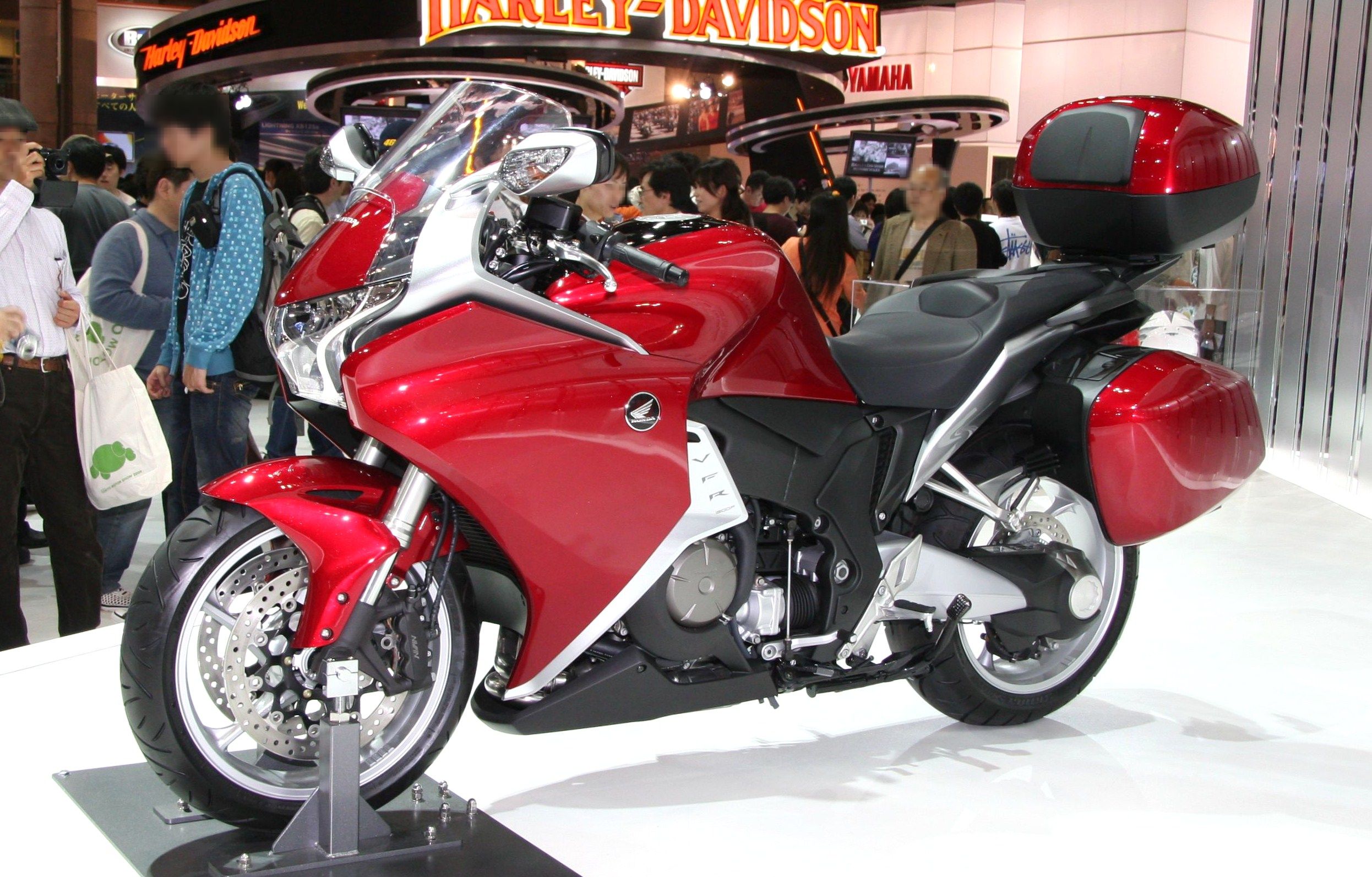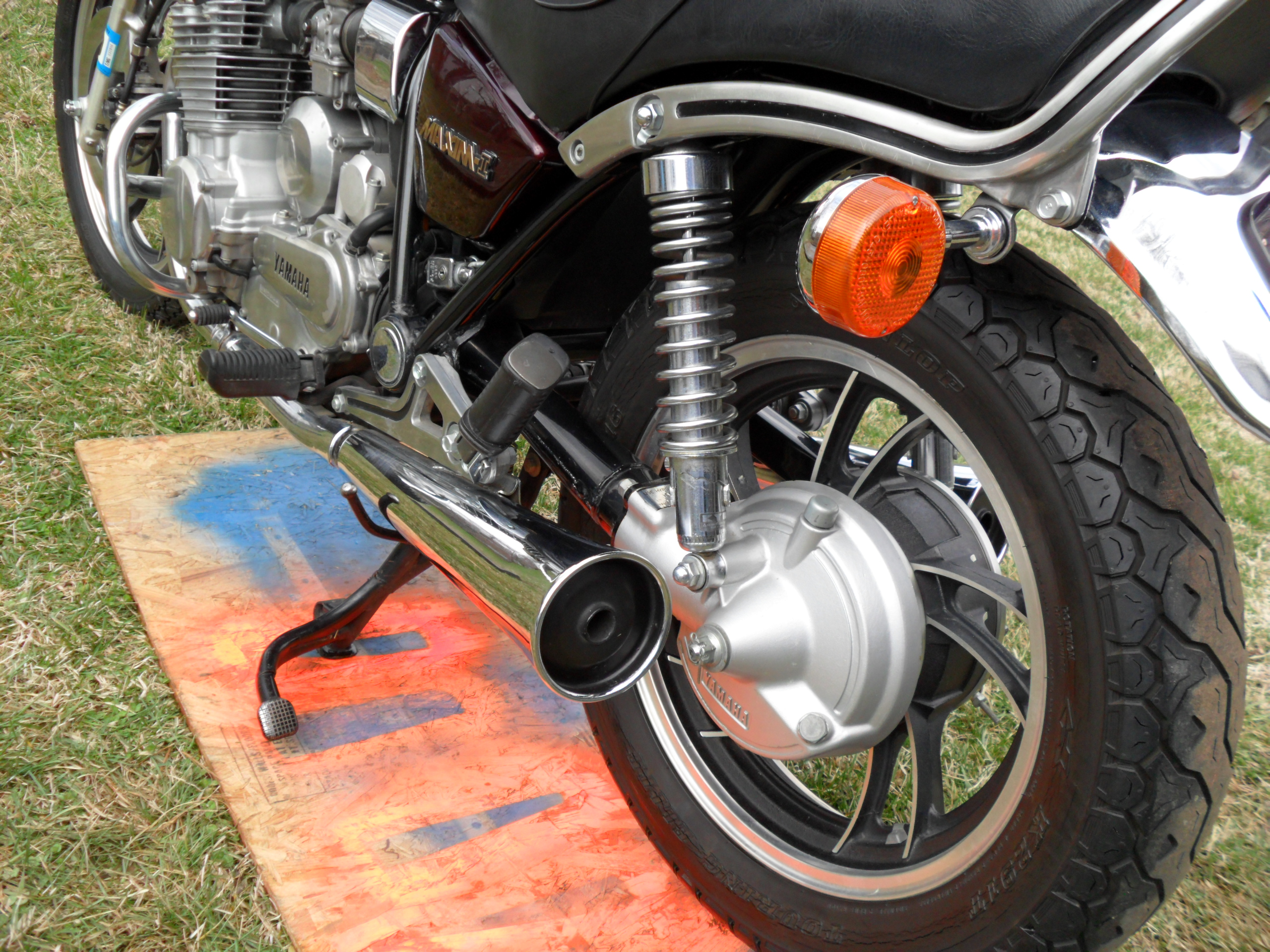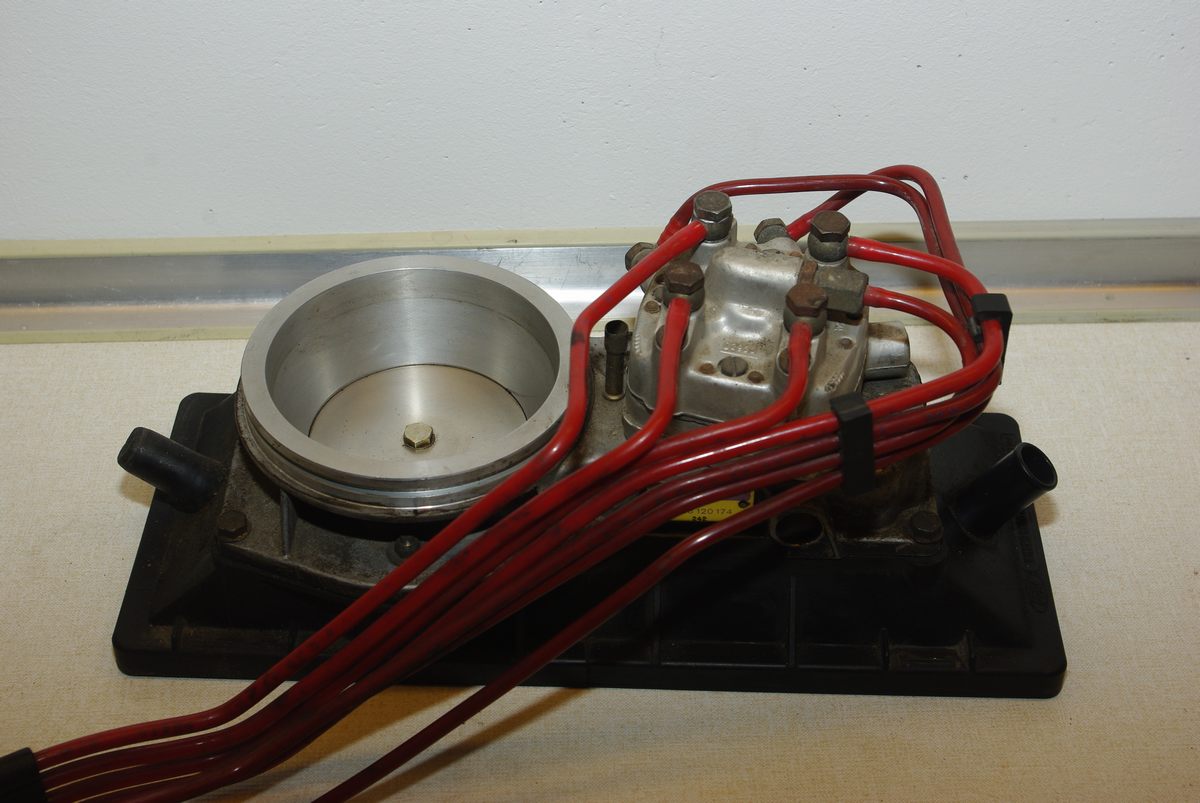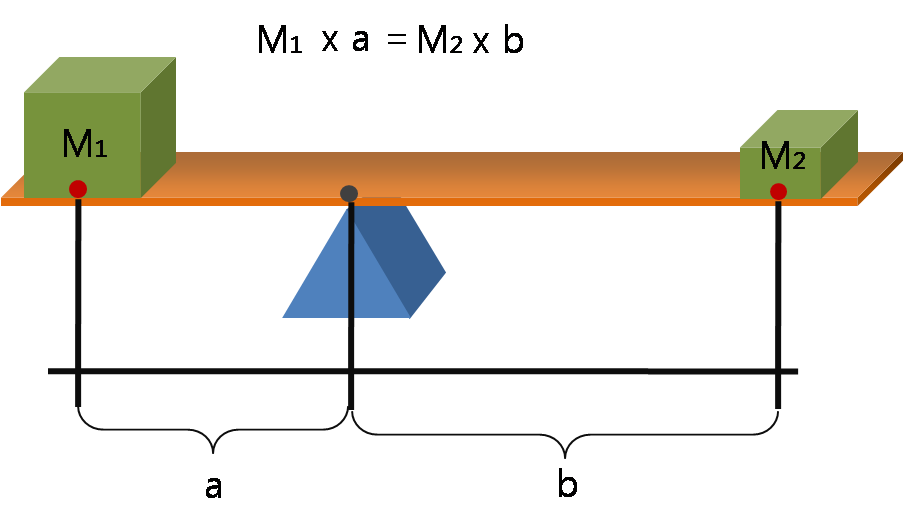|
VFR800
The Honda VFR800 (Interceptor) is a sport touring motorcycle made by Honda since 1998. The model was the successor to the VFR750F and shares the V4 engine configuration with the Honda VF and VFR series. Fifth Generation: 1998–2001 VFR800Fi (RC46) Rather than being a direct development of the previous, carbureted VFR750F engine, the VFR800 engine was a detuned and longer-stroke power plant based on the fuel-injected engine designed for the RC45 of 1994. The RVF750R RC45 engine, although a development of the VFR750R RC30 and originally derived from the VFR750F RC24, was very different from Honda's previous V4s as the gear drive for the camshafts was moved from the center of the engine to the engine's right-side (next to the clutch-pack). Another change was the two side-mounted radiators as opposed to one at the front of the engine front as on the VFR750. The engine was tuned for road use in the VFR800, so that torque was improved throughout the rev range while maximum po ... [...More Info...] [...Related Items...] OR: [Wikipedia] [Google] [Baidu] |
Honda VFR1200F
The Honda VFR1200F is the 7th generation Honda sport touring motorcycle from the VF and VFR line motorcycles powered by a transverse mounted V4 engine. The VFR1200F has several new technologies including the first dual clutch transmission offered on a motorcycle. When the sixth generation VFR800 was discontinued, it was followed by both the 2014 VFR800F (RC79) and the larger VFR1200. The VFR1200F was discontinued in 2017, as it no longer complied to new emission standards and noise regulations. Development The first V4 concept bike was unveiled at the 2008 Intermot show in Cologne, Germany. It had distinctive design elements that were to appear in the production VFR1200F, in particular the X shaped headlights. Leaks and spy photos of a new Honda appeared in various places including online and print news outlets. Honda created teaser websites in Fall 2009, in which parts of the a new V4 were shown tantalizingly, and a countdown timer was displayed. Eight years after the in ... [...More Info...] [...Related Items...] OR: [Wikipedia] [Google] [Baidu] |
Honda Crossrunner
The Honda Crossrunner (also called VFR800X) is a versatile touring motorcycle launched by Honda at the 2010 EICMA Milan Motorcycle Show. It went on sale in 2011, with first deliveries later that summer. Its V4 engine was derived from the successful VFR800. While the VFR800 was a sport touring motorcycle, the Crossrunner has a low saddle, wide-handlebars, long-travel suspension, and special Pirelli Scorpion tires better suited to "soft roads". Development Honda commissioned a European design team to assist in development. Preliminary tests included trying various Crossrunner prototypes in over 120 wind tunnel sessions to establish an optimum design for aerodynamic stability. In September 2014, Honda Motor Europe announced that the 2015 Crossrunner, to be called the VFR800X, would have a revised 800 cc V4 engine and new bodywork. Also, there would be changes to the suspension, brakes and wheels. Reception A ''Motor Cycle News'' (MCN) review said: "The Crossrunner stands ... [...More Info...] [...Related Items...] OR: [Wikipedia] [Google] [Baidu] |
Honda VF And VFR
The Honda VF and VFR series is a range of motorcycles first introduced in 1982 by Honda featuring V4 engines (hence the "VF" prefix). History In 1969 Honda revealed the CB750 superbike, establishing the template for the Universal Japanese Motorcycle with a range of transverse inline-fours. Relishing technological innovation, Honda unexpectedly moved on to adopt the V4 ("VF") configuration. However, some of the early VF models suffered mechanical problems, mainly as a result of poor quality camshafts (the "chocolate cams"). Honda, alarmed that they were losing their hard-won reputation for reliability, moved to introduce the VFR750 motorcycles featuring gear-driven ohc cams and a very high build quality. The first three or four iterations of VFR motorcycles re-established Honda's reputation for quality, and the motorcycles received almost universal praise from journalists and riders alike. The VFR was originally a 750 cc, but became an 800 cc in due course. New mode ... [...More Info...] [...Related Items...] OR: [Wikipedia] [Google] [Baidu] |
Honda VFR750F
The Honda VFR750F is a motorcycle manufactured by Japanese automobile manufacturer Honda from 1986 to 1997. The model was initially displayed to the press after the 1985 Bol d'Or before it was officially introduced in 1986. The motorcycle is a variation of sport bike and sport touring. The motorcycle is powered by a V4 engine that was developed from the VF700/750F models. The motorcycle's design is an evolution and complete redesign of the VF700/750F models. This redesign included multiple new features, including greater power output (104 hp up from 83 hp), lighter weight (claimed down 20 kg), a lower centre of gravity, a wider front tire, a slightly shorter wheelbase (15mm), six gear ratios instead of five and gear driven cams. Engine The Honda VFR750F uses a V4 engine that is primarily made of cast aluminium alloy, with the crankcase breather being divided horizontally. The engine is a carburettor-based air/fuel induction, , 16-valve, gear-driven DOHC, li ... [...More Info...] [...Related Items...] OR: [Wikipedia] [Google] [Baidu] |
Combined Braking System
A combined braking system (CBS), also called linked braking system (LBS), is a system for linking front and rear brakes on a motorcycle or scooter. In this system, the rider's action of depressing one of the brake levers applies both front and rear brakes. The amount of each brake applied may be determined by a proportional control valve. This is distinct from (conventional) integrated brakes, where applying pressure to the rear brake pedal only applies some braking force to the front brake. Legal issues In the United States, the law requires a motorcycle to have two separate braking systems, although there is no special requirement that the systems have separate controls. By contrast, a car is required to have only one braking system for dynamic braking (i.e. braking when moving), plus a separate parking brake. Since 2016, the EU requires CBS or anti-lock braking system (ABS) on all new scooters, motorcycles, tricycles, and quads below 125 cc. Since 1 April 2019, India requir ... [...More Info...] [...Related Items...] OR: [Wikipedia] [Google] [Baidu] |
Single-sided Swingarm
A swingarm, or "swinging arm" (UK), originally known as a swing fork or pivoted fork, is a single or double sided mechanical device which attaches the rear wheel of a motorcycle to its body, allowing it to pivot vertically. The main component of the rear suspension of most modern motorbikes and ATVs, it holds the rear axle firmly, while pivoting to absorb bumps and suspension loads induced by the rider, acceleration, and braking. Originally motorcycles had no rear suspension, as their frames were little more than stronger versions of the classic diamond frame of a bicycle. Many types of suspension were tried, including Indian's leaf spring suspended swingarm, and Matchless's cantilevered coiled-spring swingarm. Immediately before and after World War II, the plunger suspension, in which the axle moved up and down two vertical posts, became commonplace. In the latter, the movement in each direction was against coiled springs. Some manufacturers, such as Greeves, used swingarm d ... [...More Info...] [...Related Items...] OR: [Wikipedia] [Google] [Baidu] |
Electronic Fuel Injection
Manifold injection is a mixture formation system for internal combustion engines with external mixture formation. It is commonly used in engines with spark ignition that use petrol as fuel, such as the Otto engine, and the Wankel engine. In a manifold-injected engine, the fuel is injected into the intake manifold, where it begins forming a combustible air-fuel mixture with the air. As soon as the intake valve opens, the piston starts sucking in the still forming mixture. Usually, this mixture is relatively homogeneous, and, at least in production engines for passenger cars, approximately stoichiometric; this means that there is an even distribution of fuel and air across the combustion chamber, and enough, but not more air present than what is required for the fuel's complete combustion. The injection timing and measuring of the fuel amount can be controlled either mechanically (by a fuel distributor), or electronically (by an engine control unit). Since the 1970s and 1980s, man ... [...More Info...] [...Related Items...] OR: [Wikipedia] [Google] [Baidu] |
Oxygen Sensor
An oxygen sensor (or lambda sensor, where lambda refers to air–fuel equivalence ratio, usually denoted by λ) or probe or sond, is an electronic device that measures the proportion of oxygen (O2) in the gas or liquid being analysed. It was developed by Robert Bosch GmbH during the late 1960s under the supervision of Dr. Günter Bauman. The original sensing element is made with a thimble-shaped zirconia ceramic coated on both the exhaust and reference sides with a thin layer of platinum and comes in both heated and unheated forms. The planar-style sensor entered the market in 1990 and significantly reduced the mass of the ceramic sensing element, as well as incorporating the heater within the ceramic structure. This resulted in a sensor that started sooner and responded faster. The most common application is to measure the exhaust-gas concentration of oxygen for internal combustion engines in automobiles and other vehicles in order to calculate and, if required, dynamically a ... [...More Info...] [...Related Items...] OR: [Wikipedia] [Google] [Baidu] |
Catalytic Converter
A catalytic converter is an exhaust emission control device that converts toxic gases and pollutants in exhaust gas from an internal combustion engine into less-toxic pollutants by catalyzing a redox reaction. Catalytic converters are usually used with internal combustion engines fueled by gasoline or diesel, including lean-burn engines, and sometimes on kerosene heaters and stoves. The first widespread introduction of catalytic converters was in the United States automobile market. To comply with the U.S. Environmental Protection Agency's stricter regulation of exhaust emissions, most gasoline-powered vehicles starting with the 1975 model year are equipped with catalytic converters. These "two-way" converters combine oxygen with carbon monoxide (CO) and unburned hydrocarbons (HC) to produce carbon dioxide (CO2) and water (H2O). Although two-way converters on gasoline engines were rendered obsolete in 1981 by "three-way" converters that also reduce oxides of nitrogen (); ... [...More Info...] [...Related Items...] OR: [Wikipedia] [Google] [Baidu] |
Torque
In physics and mechanics, torque is the rotational equivalent of linear force. It is also referred to as the moment of force (also abbreviated to moment). It represents the capability of a force to produce change in the rotational motion of the body. The concept originated with the studies by Archimedes of the usage of levers, which is reflected in his famous quote: "''Give me a lever and a place to stand and I will move the Earth''". Just as a linear force is a push or a pull, a torque can be thought of as a twist to an object around a specific axis. Torque is defined as the product of the magnitude of the perpendicular component of the force and the distance of the line of action of a force from the point around which it is being determined. The law of conservation of energy can also be used to understand torque. The symbol for torque is typically \boldsymbol\tau, the lowercase Greek letter '' tau''. When being referred to as moment of force, it is commonly denoted by . ... [...More Info...] [...Related Items...] OR: [Wikipedia] [Google] [Baidu] |
Crankcase
In a piston engine, the crankcase is the housing that surrounds the crankshaft. In most modern engines, the crankcase is integrated into the engine block. Two-stroke engines typically use a crankcase-compression design, resulting in the fuel/air mixture passing through the crankcase before entering the cylinder(s). This design of the engine does not include an oil sump in the crankcase. Four-stroke engines typically have an oil sump at the bottom of the crankcase and the majority of the engine's oil is held within the crankcase. The fuel/air mixture does not pass through the crankcase in a four-stroke engine, however a small amount of exhaust gasses often enter as "blow-by" from the combustion chamber. The crankcase often forms the lower half of the main bearing journals (with the bearing caps forming the other half), although in some engines the crankcase completely surrounds the main bearing journals. An ''open-crank'' engine has no crankcase. This design was used in early ... [...More Info...] [...Related Items...] OR: [Wikipedia] [Google] [Baidu] |
Lever
A lever is a simple machine consisting of a beam or rigid rod pivoted at a fixed hinge, or '' fulcrum''. A lever is a rigid body capable of rotating on a point on itself. On the basis of the locations of fulcrum, load and effort, the lever is divided into three types. Also, leverage is mechanical advantage gained in a system. It is one of the six simple machines identified by Renaissance scientists. A lever amplifies an input force to provide a greater output force, which is said to provide leverage. The ratio of the output force to the input force is the mechanical advantage of the lever. As such, the lever is a mechanical advantage device, trading off force against movement. Etymology The word "lever" entered English around 1300 from Old French, in which the word was ''levier''. This sprang from the stem of the verb ''lever'', meaning "to raise". The verb, in turn, goes back to the Latin ''levare'', itself from the adjective ''levis'', meaning "light" (as in "not heavy") ... [...More Info...] [...Related Items...] OR: [Wikipedia] [Google] [Baidu] |


.jpg)







.jpg)
